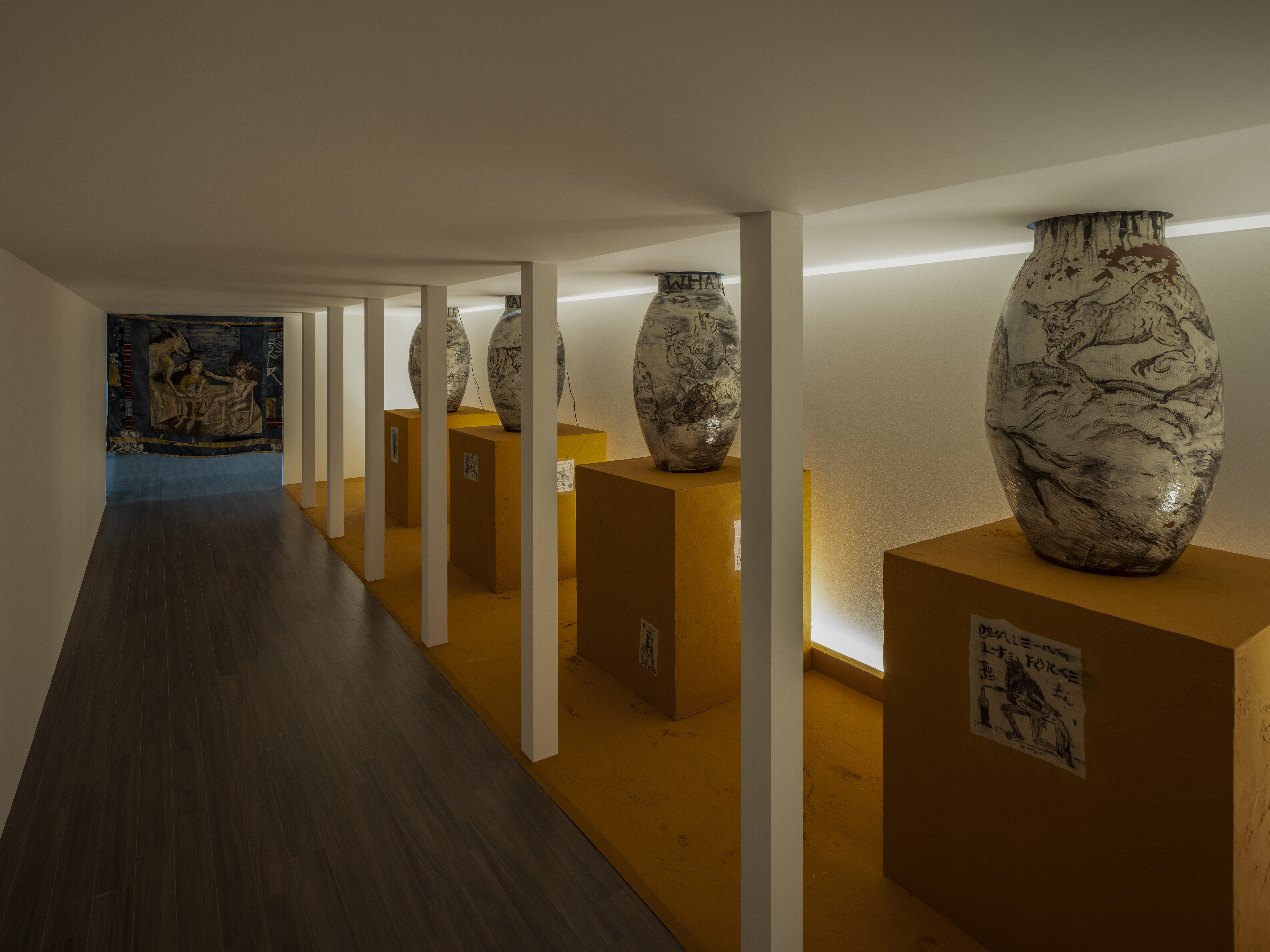Candice Lin
Born 1979 | Concord
Lives and works Los Angeles
Candice Lin is known for multimedia installations that incorporate transitive materials and transformative substances that signal the porous nature of boundaries. Lithium Sex Demons in the Factory 2023 developed out of Lin’s ongoing research into contemporary globalism in lithium battery production. Her interest in the topic began with growing speculation that the largest known volume of lithium could be extracted from the Salton Sea region in California. The Republic of Korea expands Lin’s research in geographical and historical terms: it is a site for one of the biggest lithium battery producers in the world and a place with a rich history of mass ceramic production. As products of cross-cultural exchange, ceramic vessels such as onggi and buncheong were typically created in large numbers for storage and fermentation. Touching on a complex web of issues and stories that relate to the two histories of mass production, Lin presents Lithium Sex Demons in the Factory in dialogue with the Gwangju National Museum’s collection. The architectural installation includes a surveillance platform, manufacturing workstations, ceramic sculptures, sound, video animations, and printed texts that narrate the fictional lives of the lithium sex demons. The ceramic discs that appear on the workstations refer to a circular chart found in the images of the lithium battery assembly factory that Lin came across. More broadly, they relate to the artist’s thinking around the development of time clocks in regimenting the workday as a system of self-surveillance that the factory began to use in the 19th century.
Candice Lin, Lithium Sex Demons in the Factory 2023. Manager’s platform, ceramics, wood, metal work stations, laboratory stands, animation, sound, electronics, hacked stirring machines, office supplies, aluminium and plastic ducting and tubing, embossed copper sheet, magnets, drawings, printed paper, glass, plastic, various liquids, cardboard and brass fittings. Dimensions variable. Courtesy the artist and François Ghebaly Gallery, Commissioned by the 14th Gwangju Biennale and Canal Projects. Installation view, 14th Gwangju Biennale (2023). Image courtesy Gwangju Biennale Foundation. Photo: glimworkers
